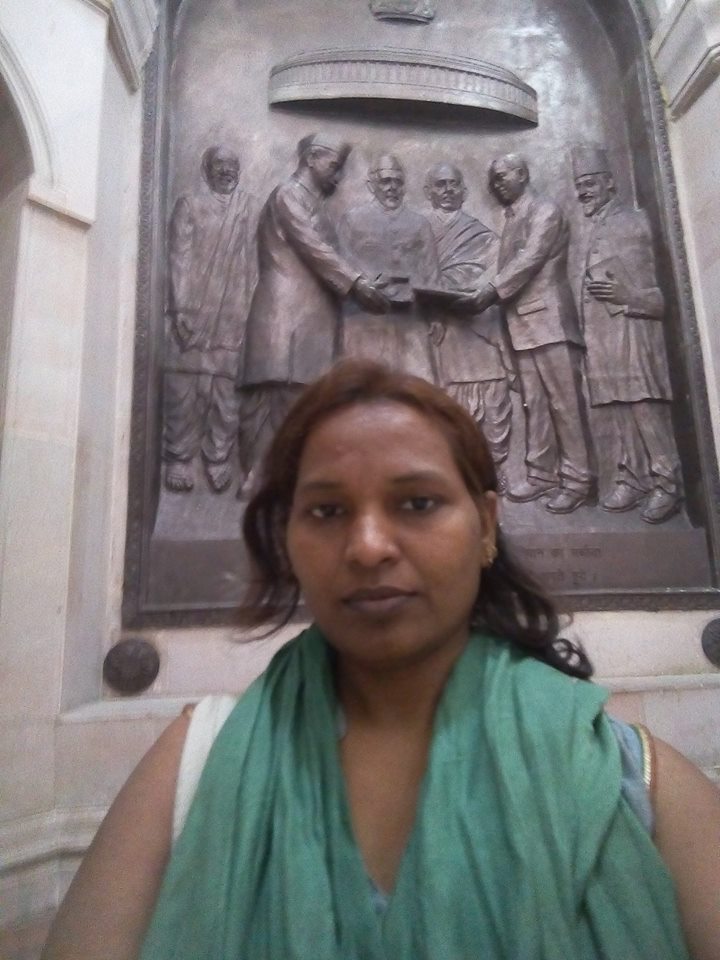Thongam Bipin
 Racism is a form of discrimination that is based on race, physical features and region. Like any other form of discriminations, whether, gender, caste or sexual orientation, racism is deeply rooted in our psyche, in our national collective imagination. Collectivity implicates homogeneity, common feelings. Racism involves power and dominance. Any difference or variations from such collective would be/are met with a firm hand. They need to be contained, tamed, and controlled. Our collective imagination (nation) is discriminatory in nature.
Racism is a form of discrimination that is based on race, physical features and region. Like any other form of discriminations, whether, gender, caste or sexual orientation, racism is deeply rooted in our psyche, in our national collective imagination. Collectivity implicates homogeneity, common feelings. Racism involves power and dominance. Any difference or variations from such collective would be/are met with a firm hand. They need to be contained, tamed, and controlled. Our collective imagination (nation) is discriminatory in nature.
Priyanka Chopra donning the role of Mary Kom in the movie of the same title underscores such deep rooted collective imagination. At a time when the Indian state is struggling to curb the growing insensitivity and violence against the Northeast (NE) in various parts of the country, this movie instead of making a right/bold move has taken a safer route, because of the fear of the (dominant) collective. This raises questions that need to be answered, or at least makes us ask ourselves – why the Northeast cannot represent itself? Is it because there is no bankable star from the region, culturally, monetarily? Or, is there something more to this? Is NE untranslatable as Indian? Do they remain as non-Indian in the collective imagination of the nation? The non-Indian, or yet to become Indian category/tag is a strong point of engagement with the rest of India. This reflects in the selection of Priyanka Chopra over actors/persons from the region, which should have been the obvious choice.
The larger question of representation, as it gets more and more complicated, should be critically looked at in this case as well. The privileged should reflect on why marginalized communities are questioning their representations of the latter. Do such representations, which are most often patronizing, reinforce the same pattern of oppression of voices of the marginalized? Why is that Sanjay Leela Bhanshali has to recruit Priyanka Chopra who in no way looks like Mary Kom, and who is not from the region? Does it open up the fear of hurting the sentiment of the nation, or, is it because of the bankability at the box office? If it is a question of box office collections, it entails why Bhanshali assumes that the nation would be unwilling to spend the same amount of money to go to the theatre and watch some other actor from the NE doing the role of Mary Kom, who would be closer to reality? Why is that the nation is stingy about spending money on a NE person but not on Priyanka? The ticket that we buy is determined by various factors like stardom, popularity etc. But, I would assume that, Mary Kom is a different case altogether. It is not a movie about Priyanka Chopra, it is about Mary Kom.
Actors can play any roles. If this is the line of argument, I lose here. The artistic freedom in/of representation is inflicting another injury to the region – a region, a community that has been a victim of state sponsored violence and discrimination. India is, since a long time, talking about assimilation and emotional integration of the region with the rest of India. If this is how one should go about integration, through Priyanka Chopra, are we forcefully integrating the region or disintegrating it? The (token) representation that was given in Chak de India could have been avoided then. The roles of the two NE girls should have been played by somebody from the mainstream India. The producers just needed to give them NE names. That would do.

The Hindi film industry or Bollywood, that re/manufactures nation, caste, class, region etc., thus provides us a glimpse of what the Indian nation is. Priyanka Chopra becomes an enabling body for the production of, and imagining the Indian nation, and not anyone from the NE. Homogeneity, cultural and racial assimilation are achieved through a Chopra, not a Kom. The Hindi film industry that has taken to itself that it represents India, could not find an able and ‘meritorious’ person from the region to do the role of Mary Kom. It is only in a Chopra that India can imagine its nationhood. This reminds us of many academic seminars, books published, articles written, plays staged, commissions formed, but with no one on the stage from NE on the panel. There is a systematic denial of self representation to the people of the NE.
Priyanka as Mary Kom and introduction of Ambedkar by Arundhati Roy, function in the same manner. Though, the issue has been discussed extensively in Round Table India, I would like to reiterate one point: why does the Indian nation need a Roy to introduce Ambedkar and get a better acquaintance with the text? I am not comparing Ambedkar and Mary Kom here, but it is not surprising to see how these cases work in a similar pattern. India will read untouchable Ambedkar only after a Roy purifies him and then read him through the eyes of a Roy. In a similar fashion, Mary Kom, requires a proxy, a Chopra, to be accepted on the silver screen. She requires purification, a racial purification. And, this purification is performed through the figure of a Chopra. The figure of Priyanka Chopra rinses away the NE, but the name Mary Kom remains. She saves the nation from adulteration. The nation wants just the incredible story of Mary Kom, and her achievement, her medal, but not her, not her people. If this is not racism, what is it?
~~~
Thongam Bipin is currently a Ph.D student in University of Hyderabad.
Mary Kom’s picture courtesy: Scoopwhoop.com.










